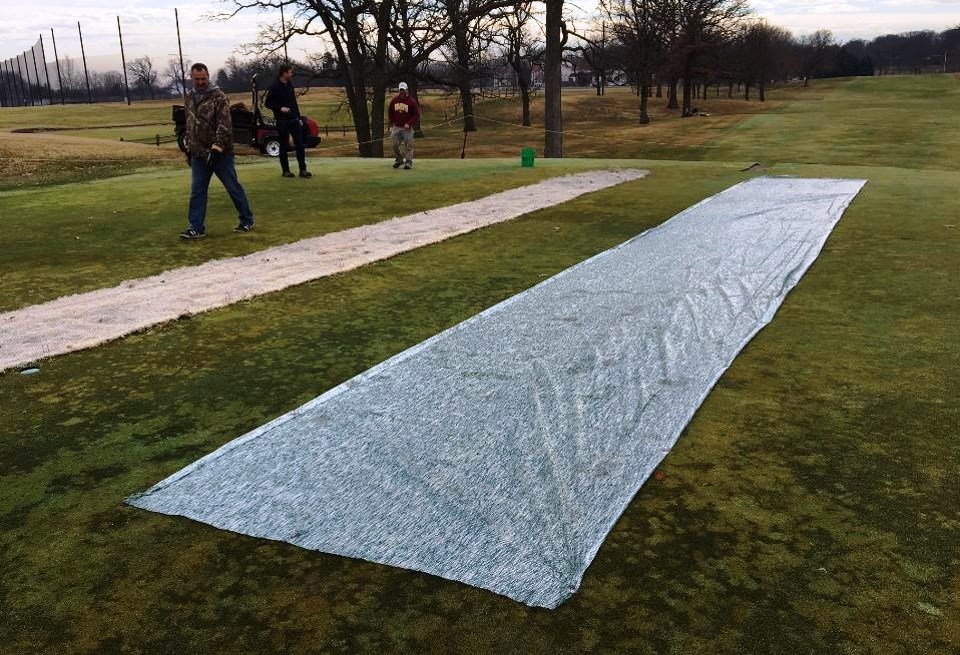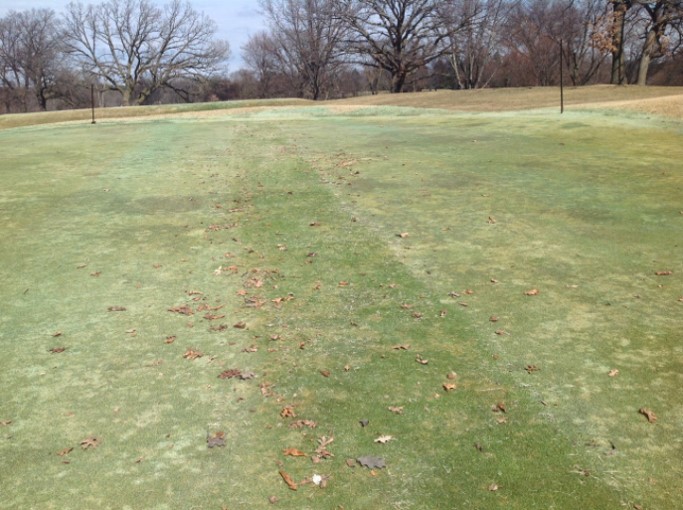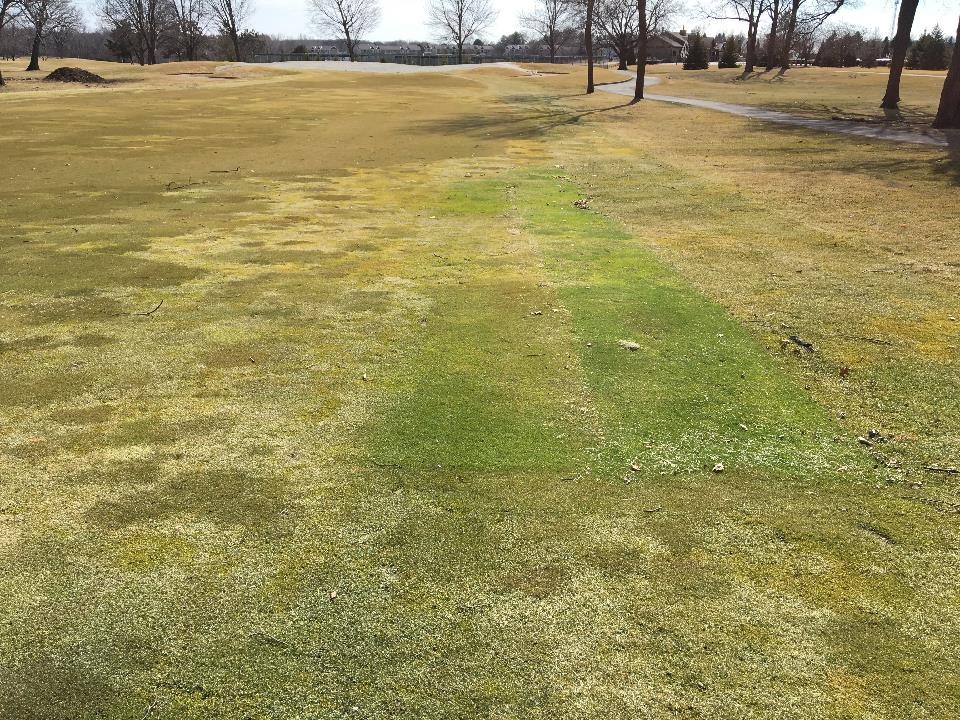Plants that overwinter undergo physiological changes to acclimate to cold temperatures, allowing them to survive until spring. However, when warm temperatures occur in winter, cold hardiness gained through acclimation can be lost, a process called deacclimation.
For example in Minnesota in 2017, warm February temperatures with highs near 60 F over one week caused turfgrasses to come out of dormancy. This is a problem, particularly for annual bluegrass, because it deacclimates more quickly than species such as creeping bentgrass. When winter temperatures drop back to normal, annual bluegrass can suffer winterkill. We partnered with our MGCSA members to investigate a potential solution to this problem.
Research question
Will installing covers during a February warm-up reduce the risk of injury to annual bluegrass due to deacclimation?
Hypothesis
Insulating covers placed on annual bluegrass during a winter warm-up will protect the plants from low temperature injury that occur when temperatures drop.
Study locations
- Medina Country Club (Superintendent – Erin McManus)
- Les Bolstad Golf Course, University of Minnesota (Superintendent – Brent Belanger)
Treatments
Cover treatments
- Evergreen permeable/non-insulating cover
- Excelsior permeable/insulating cover
- No cover
Fungicide treatments
- Chlorothalonil
- No fungicide
A contact fungicide (chlorothalonil) was reapplied over 1/2 of the trial area to investigate the need of additional snow mold protection due to concerns of photodegradation of previous fungicides during the open winter. Covers (Figure 1) were put down on February 22 and removed on March 27, 2017.
Results
- Minimal damage to the uncovered and covered annual bluegrass (Figures 2 and 3).
- As expected, covered annual bluegrass had earlier greenup and growth.
- No influence from snow mold fungicide.
Takeaway
While few issues were observed due to annual bluegrass deacclimation, installing covers in late-February was enough to significantly increase spring green-up of both annual bluegrass and creeping bentgrass; insulating covers increased this green-up. By mid-April, there were no noticeable differences in covered vs. uncovered turf.
Contact Maggie Reiter, Extension Educator - Turfgrass <[email protected]> for more information on this program.


